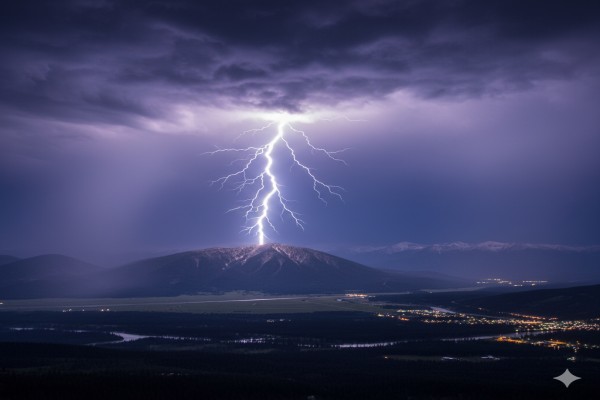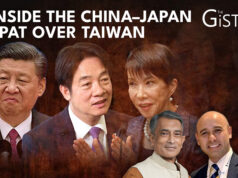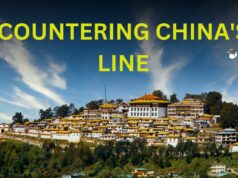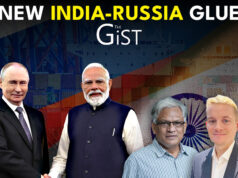For much of the twentieth century, controlling the flow of energy—especially oil—was a defining instrument of global power.
From Britain’s World War I blockade of Germany to the Arab oil embargo of 1973, nations used energy to coerce, punish, or influence others. But after decades of market liberalisation, diversification, and globalisation, the world had largely come to see energy weaponisation as a relic of the past.
That assumption has now been shattered. As Jason Bordoff and Meghan L. O’Sullivan write in the November-December issue of Foreign Affairs magazine, the “energy weapon” is once again being unsheathed—this time in an era of great-power competition, economic fragmentation, and a complex transition toward clean energy.
Russia’s 2022 invasion of Ukraine marked the sharpest reminder of how energy can be wielded as a geopolitical cudgel. By cutting gas deliveries to Europe, Moscow inflicted economic pain across the continent, triggering a crisis that reverberated globally.
China, meanwhile, has restricted exports of critical minerals essential for semiconductors, defence systems, and renewable technologies. Even the United States has entered the arena, using sanctions and trade threats to shape energy flows, including restrictions on firms operating in Venezuela and tighter curbs on countries importing Russian and Iranian oil.
In a world accustomed to stable energy markets and growing faith in the clean energy transition, Bordoff and O’Sullivan warn, these developments have caught many by surprise. The resurgence of energy coercion is driven by two powerful forces: the return of geopolitical rivalry and the structural shifts underway within the global energy system itself.
The authors trace the evolution of energy as a tool of statecraft from the early twentieth century onwards. Oil, they note, became central to military and economic power. During the 1973 Arab oil embargo, OPEC’s decision to restrict supply caused the price of oil to skyrocket nearly sevenfold, exposing the West’s vulnerability.
That crisis, however, prompted a profound rethink. Nations sought to build resilience and cooperation, leading to the creation of the International Energy Agency in 1974 and the liberalisation of global energy markets. As futures trading and transparent pricing replaced fixed long-term contracts, oil became the world’s most traded commodity.
Natural gas followed a similar trajectory, with liquefied natural gas (LNG) transforming what had once been a regional market into a global one. Europe’s dependence on Soviet—and later Russian—gas was long seen as manageable, thanks to the interdependence created by trade. For much of the Cold War, the authors note, energy exchange between Europe and the USSR was even regarded as a stabilising factor.
The post–Cold War years deepened this sense of security. The 1994 Energy Charter Treaty created legal frameworks for cross-border cooperation. Western investment poured into the former Soviet energy sector, and China’s entry into the World Trade Organization in 2001 further globalised the energy economy. Beijing’s “going out” policy and later its Belt and Road Initiative built sprawling infrastructure networks to secure diversified energy access.
By the early 2000s, most advanced economies believed they had achieved energy security. The integration of global markets, coupled with the rise of U.S. shale oil, seemed to have buried the spectre of the energy weapon.
That complacency, Bordoff and O’Sullivan argue, has evaporated. Globalisation’s retreat, growing protectionism, and the resurgence of state intervention in energy markets have revived coercive tendencies.
Major powers are increasingly turning to what the authors call “state capitalism”. The United States has expanded its use of tariffs and trade measures, while China is honing its ability to employ export controls as leverage. Even energy-exporting allies such as Norway have faced domestic pressures to restrict exports to stabilise prices at home.
In this fragmented landscape, governments no longer trust markets alone to deliver reliable energy. The clean energy transition, paradoxically, is both alleviating and aggravating this insecurity. While renewables diversify the energy mix, they also introduce new vulnerabilities—particularly dependence on critical minerals and technologies concentrated in a few countries.
Oil markets, the authors warn, are heading toward tighter conditions. With U.S. shale output plateauing and exploration investments declining, spare production capacity is shrinking. BP now expects oil demand to keep rising through the decade, while the International Energy Agency’s forthcoming World Energy Outlook projects OPEC’s market share could climb back to 40 percent by 2050—levels not seen since the 1970s. Such concentration, they note, will amplify the cartel’s geopolitical influence.
Natural gas faces similar pressures. The expansion of LNG helped mitigate Europe’s crisis in 2022, but future supplies are set to concentrate in a few producers, notably the United States and Qatar. This shift increases the risk of new chokepoints, such as the Strait of Hormuz or the U.S. Gulf Coast, becoming flashpoints for coercion or attack.
At the same time, the accelerating clean energy transition is creating dependencies of its own. The authors highlight that China produces or refines more than 70 per cent of the world’s critical minerals and dominates manufacturing in solar panels, wind turbines, and batteries. Such control gives Beijing significant potential leverage—already demonstrated when it restricted graphite and rare earth exports during trade tensions with Washington in 2024–25.
The world’s march toward electrification—driven by AI data centres, electric vehicles, and industrial demand—will raise electricity’s share of global energy use from 20 per cent today to 25 per cent by 2035, according to the IEA. While countries can generate much of this power domestically, cross-border electricity trade introduces new vulnerabilities. Unlike oil, electricity cannot be easily stored or rerouted, making power grids tempting targets for cyber or physical attacks.
Bordoff and O’Sullivan point to recent warnings from the FBI that state-sponsored Chinese hackers have infiltrated U.S. critical networks. In a world where electricity underpins everything from advanced manufacturing to AI, such disruptions could cause disproportionate harm.
As the “energy weapon” reemerges in multiple forms—through oil, gas, minerals, and even electrons—the authors argue that policymakers must rethink both energy and foreign policy. Building resilience will require reducing exposure to volatile imports, investing in domestic production, and improving energy efficiency. But complete self-sufficiency is a myth: even the United States, which produces more energy than it consumes, remains deeply tied to global markets.
The authors conclude that clean energy offers the best long-term defence. Unlike fossil fuels, clean technologies can be produced in many countries and made more secure through diversification of supply chains. Strengthening domestic manufacturing, refining, and grid infrastructure, they note, can blunt coercive pressures while accelerating decarbonisation.
Ultimately, Bordoff and O’Sullivan suggest, the new age of energy weaponisation may contain its own silver lining. By exposing the fragility of fossil-fuel dependence and the risks of concentrated supply chains, it could spur the political will for massive investment in clean energy systems. In doing so, the very forces destabilising the world’s energy order might also drive the next great leap toward its security.
In a career spanning three decades and counting, Ramananda (Ram to his friends) has been the foreign editor of The Telegraph, Outlook Magazine and the New Indian Express. He helped set up rediff.com’s editorial operations in San Jose and New York, helmed sify.com, and was the founder editor of India.com.
His work has featured in national and international publications like the Al Jazeera Centre for Studies, Global Times and Ashahi Shimbun. But his one constant over all these years, he says, has been the attempt to understand rising India’s place in the world.
He can rustle up a mean salad, his oil-less pepper chicken is to die for, and all it takes is some beer and rhythm and blues to rock his soul.
Talk to him about foreign and strategic affairs, media, South Asia, China, and of course India.





